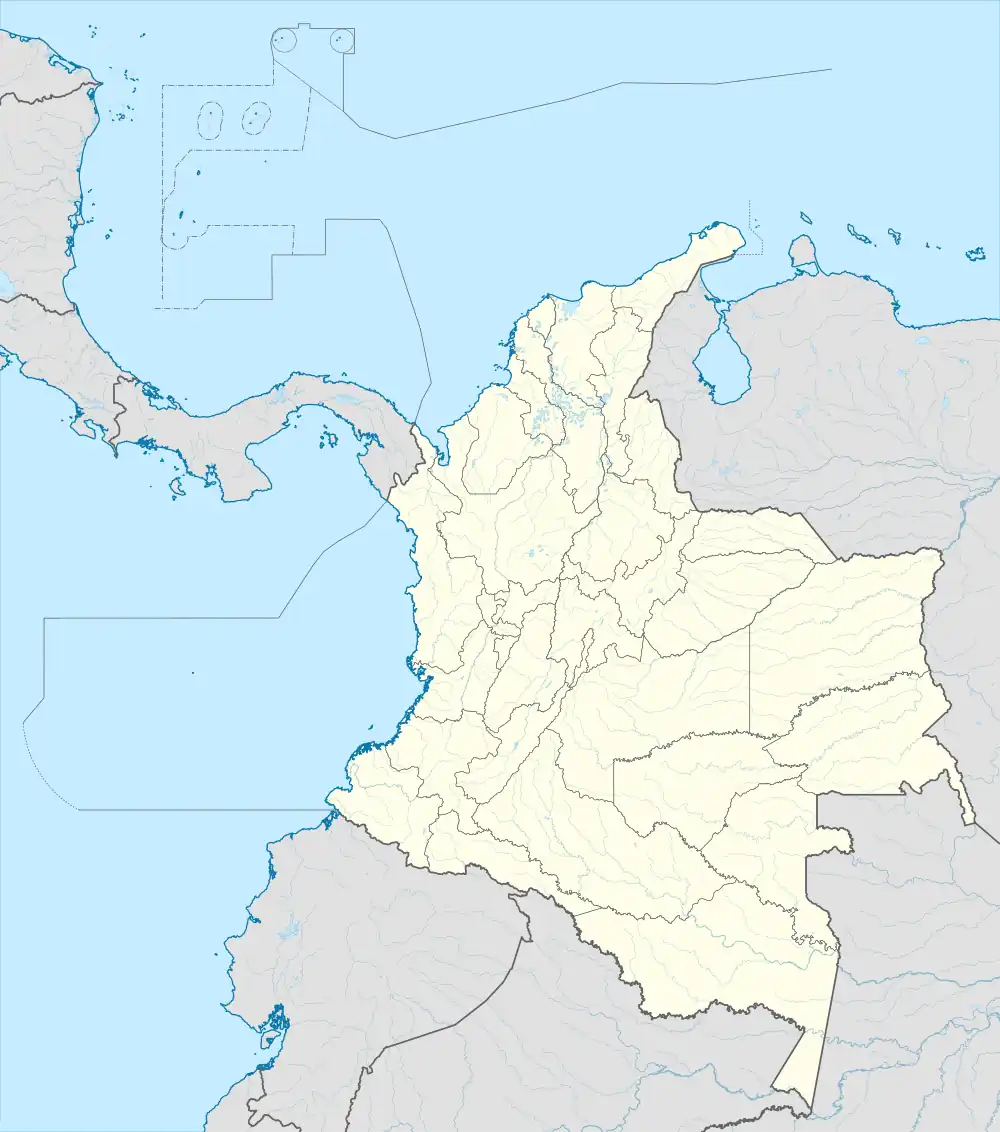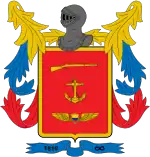Captain Luis F. Gómez Niño Air Base
Captain Luis Francisco Gómez Niño Air Base (Spanish: Base Aérea Capitán Luis Francisco Gómez Niño[4] (IATA: API, ICAO: SKAP), also known as Apiay Air Base (Base Aérea de Apiay), is a Colombian military base assigned to the Colombian Aerospace Force (Fuerza Aeroespacial Colombiana or FAC) Combat Air Command No. 2 (Comando Aéreo de Combate No. 2 or CACOM 2).[5] It also hosts members of the Colombian Army and Colombian Navy. The base is located in Apiay, near the city of Villavicencio, in the Department of Meta in central Colombia, by the steps of the Andes mountain range and the plains of the Colombian Llanos.
Captain Luis F. Gómez Niño Air Base (Apiay Air Base) Base Aérea Capitán Luis F. Gómez Niño (Base Aérea de Apiay) | |||||||||||
|---|---|---|---|---|---|---|---|---|---|---|---|
 | |||||||||||
| Summary | |||||||||||
| Airport type | Military | ||||||||||
| Operator | Colombian Aerospace Force | ||||||||||
| Location | Apiay / Villavicencio, Colombia | ||||||||||
| Built | 1933 | ||||||||||
| In use | 1933-Present | ||||||||||
| Commander | Brigadier General Alejandro Vélez Ospina | ||||||||||
| Occupants | Combat Air Command No. 2 | ||||||||||
| Elevation AMSL | 1,211 ft / 369 m | ||||||||||
| Coordinates | 04°04′34″N 073°33′46″W | ||||||||||
| Website | www.cacom2.mil.co | ||||||||||
| Map | |||||||||||
 API Location of airport in Colombia | |||||||||||
| Runways | |||||||||||
| |||||||||||
The base also hosts members of the United States Military under a cooperation program under Plan Colombia intended to help the Colombian military with the eradication of illegal drug trade and the illegally armed groups in the Colombian armed conflict.
Apiay has served as base for operations such as Plan Patriota which included operations such as Operation JM.
History
The current Combat Air Command No. 2 (Comando Aéreo de Combate No. 2) was established in 1933, in the jungle, with the name San José del Guaviare Air Base (Base Aérea San José del Guaviare). In December 1947 it moved to the village of Apiay, 12 kilometres (7.5 mi) from Villavicencio, to become the Apiay National Airfield (Aeródromo Nacional de Apiay), an auxiliary to Madrid Air Base. In 1956 it was equipped with AT-6 Texan and T-34 Mentor aircraft, to provide training to pilots recently graduated from the Military Aviation School (Escuela Militar de Aviación). In 1959 the unit was elevated to a main base with the assignment of B-26 aircraft moved from the Palanquero Air Base, changing its name to Comando Aéreo de Bombardeo. In 1961 it received the name Luis F. Gómez Niño Air Base as a tribute to Captain Luis F. Gómez Niño (1896-1934), a Colombian military aviator.[6]
In 1972, the base receives its first jet aircraft, T-33 and T-37, brought from the Combat Air Command No.1, and changes its name to the present day name of Combat Air Command No.2.
Today, the air base has responsibility for over 600.000 km2[7][8]
Facilities
The air base resides at an elevation of 1,227 feet (374 m) above mean sea level. It has one runway designated 10/28 with an asphalt surface measuring 8,204 by 164 feet (2,501 m × 50 m).[1]
Accidents and incidents
- On 8 September 1969, Douglas C-47 FAC-685 of SATENA crashed near Apiay Air Force Base killing all 32 people on board. The aircraft was operating a domestic scheduled passenger flight from Monterrey Airport to Apiay.[9]
References
- Airport information for SKAP from DAFIF (effective October 2006)
- Airport information for API at Great Circle Mapper. Source: DAFIF (effective October 2006).
- "AIP Colombia - AD 1.3 INDICE DE AERODROMOS Y HELIPUERTOS" (PDF) (in Spanish). Aeronáutica Civil. Retrieved 31 July 2017.
- "Fuerza Aérea Colombiana 84 Años" (in Spanish). 8 November 2008.
Base Aérea Capitán "Luis Fernando Gómez Niño", sede del Comando Aéreo de Combate No 2
- (in Spanish) CACOM 2 - Apiay (Meta) - Comando Aéreo de Combate No.2
- Capitán Luis F. Gómez Niño
- (in Spanish) Reseña Histórica: Comando Aéreo de Combate No 2
- (in Spanish) Reseña Histórica: Capitán Luis F. Gómez Niño
- "FAC-685 Accident Description". Aviation Safety Network. Retrieved 14 February 2011.
